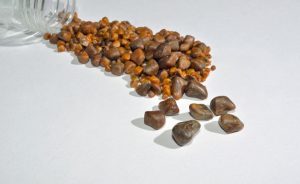
Gallbladder sludge may lead to gallstones in elderly: Causes and treatments
Gallbladder sludge may lead to gallstones in the elderly. Gallbladder sludge, also known as biliary sludge, is a gel-like bile, a potential precursor to cholesterol stones. In the majority of cases, this sludge does not form into stones and can easily dissolve in the gallbladder.
Biliary sludge is normal and can be detected through ultrasound. It contains sediments of calcium bilirubinate granules, cholesterol crystals, and mucus. Generally, gallbladder sludge is not a problem unless it is present for an extended period of time. If persistent or excessive, it could contribute to the formation of gallstones. Continue reading…
Gallbladder or biliary sludge is a mixture of small particle solids that accumulate from bile, a fluid stored in the gallbladder that helps in the process of digestion. This sludge can cause severe pain and discomfort to those affected. These symptoms may resemble gallstone symptoms, but gallbladder sludge is thickened bile that has remained in the gallbladder for too long.
While there are many medical interventions that can help alleviate this disorder, adhering to a gallbladder sludge diet may be all you need to help get rid of your biliary sludge symptoms. Continue reading…
A gallbladder attack can feel like sudden pain accompanied by nausea, sweating, fever, and chills. This pain can last for a few minutes and disappear, or it can radiate upwards toward the shoulders.
A gallbladder attack is most often caused by gallstones. Gallstones are solid crystalized deposits that form from cholesterol and bile pigments in the gallbladder. There are two types of gallstones:cholesterol gallstones and pigment gallstones. Cholesterol gallstones account for 80 percent of gallstones and are usually yellow-green in color. Pigment gallstones are small and dark, and made up of bilirubin.
Gallstones affect approximately 20 percent of women over 40 and eight percent of men.They can contribute to infection, which is commonly treated with antibiotics. Continue reading…
Following a gallbladder diet can help keep it healthy along with reducing the risk of painful gallbladder stones and the complications they can bring. The role of the gallbladder is to collect and store bile, which is used for proper fat digestion. Although the gallbladder does have an important function, it is not absolutely necessary to be present in the body, and that is why you have often heard of gallbladder removal.
When gallbladder problems develop, that is when the probability of its removal arises. Therefore, in order to prevent gallbladder removal, it’s important to keep it healthy, and the best way to do so is through a gallbladder diet. Continue reading…
Cholecystitis is inflammation of the gallbladder. The gallbladder is a sac-like organ located just below the liver, on the upper right side of the abdomen. The gallbladder temporarily stores the bile produced by the liver. Bile is a fat-digesting liquid, which is released during digestion into the small intestine in order to break down fats.
Gallstones can lead to cholecystitis. If a gallstone blocks the passage where bile is released, the bile can become trapped in the gallbladder and cause infection and inflammation. Continue reading…